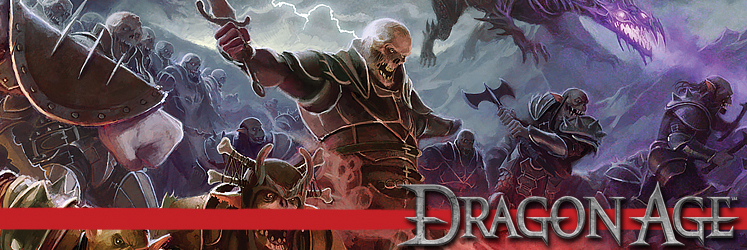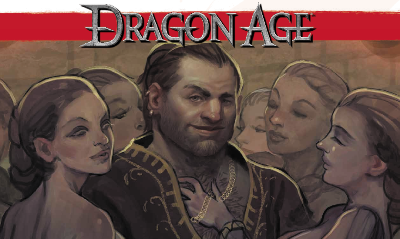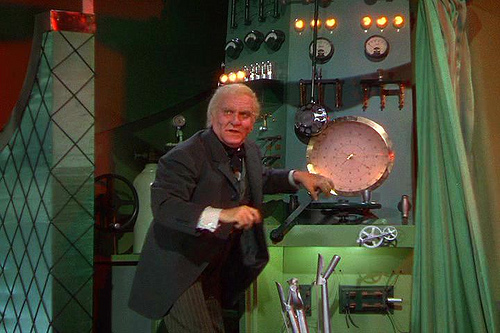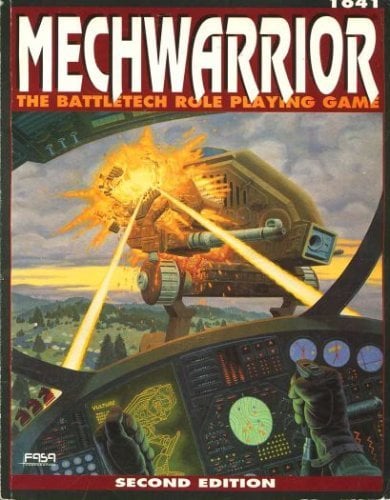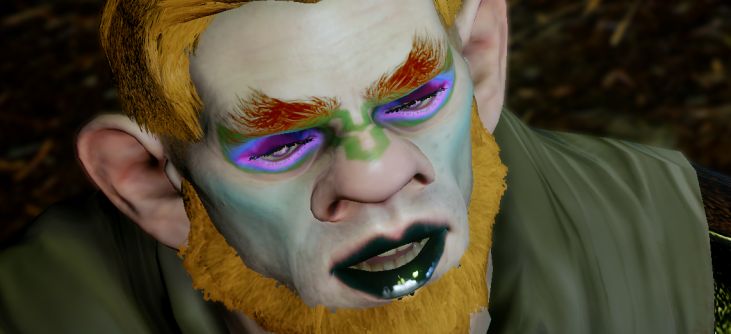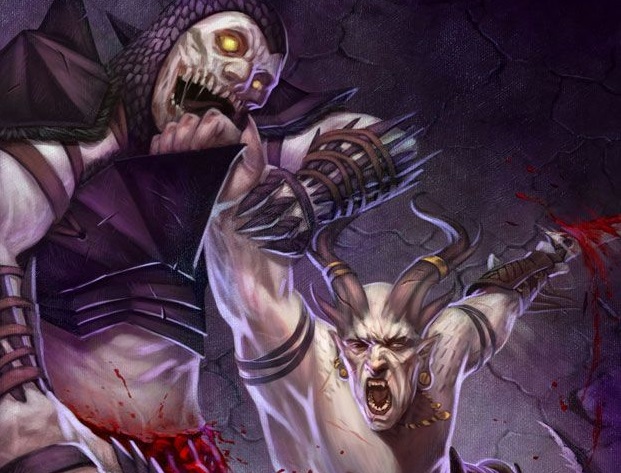RPG: Gaming’s New AGE
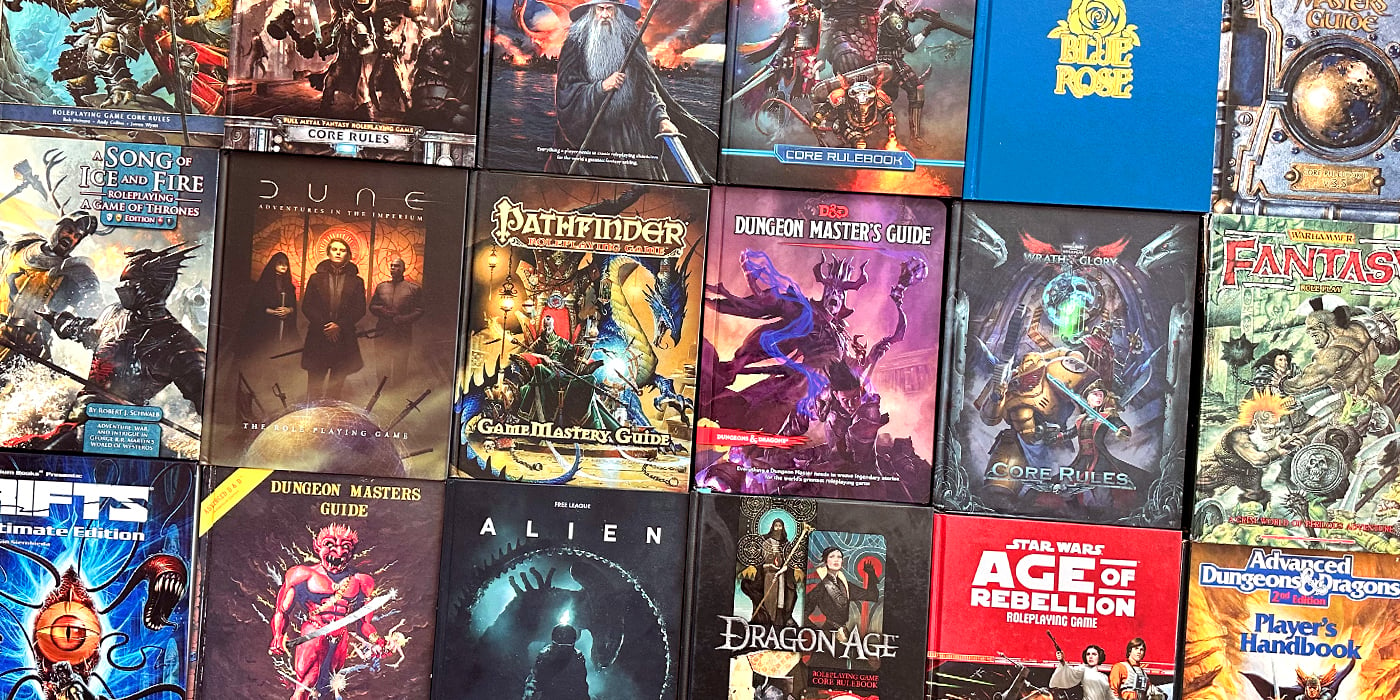

Dragon Age won Best Game at GenCon this past year. And its rules, the Adventure Game Engine, herald a new AGE for gaming.
Alternate titles for this article included, “New AGE gaming–no crystals needed” “AGE-ism in games, why it’s a good thing,” and “Finely AGE’d Cheddar, or: How I Stopped the Blight on my Summer Vacation.” I actually really like the last one, but now that we’ve got that out of the way, let’s take a look at the Adventure Game Engine, which powers the award-winning Dragon AGE (I see what they did there), Fantasy AGE (and its cybernetically-enhanced adventure campaign/companion book Titansgrave), and the upcoming new edition of Blue Rose all brought to you by the fine foks at Green Ronin publishing.
If you’ve never played Dragon Age, you are in for a treat, for there is a whole world out there to discover in the Core Rulebook. You can dig deep into the world of Thedas, checking out countries like Ferelden and Orlais–you could also play through the Dragon Age trilogy of video games–which answers the question of what would happen if you crossed Warhammer Fantasy with Game of Thrones.
You thought I was joking, didn’t you?
Mostly there’s less nudity (although there are mods for that), and more magic, dwarves, elves, and other fantasy shenanigans. There’s a little more nuance to it than that–but that’s the basic dial you might set going into the world of Dragon Age. If you have played Dragon Age before then the RPG expands on the world a great deal. You can learn about Nevarran assassins, Rivaini smugglers, Qunari converts…there’s a lot there. It’s a very complete setting in one book, with something for everyone to dig into. But that’s probably something we’ll cover in a Realm Guide one day.
For now though, we’re here to talk about the man behind the curtain.
Pay no attention to the 3d6 + Modifiers…
The Adventure Game Engine is, at its core, a standard roll some dice, add them together, hit a target number kind of system. You roll 3d6, add relevant modifiers, and then compare them to a target number–nothing super fancy. Though hidden in this core mechanic is perhaps my favorite thing about the AGE system–stunt points. You see, you’re not rolling three identical d6s (although at my table, that’s usually the case) one die is meant to be the ‘dragon die’ which is mostly unimportant until you roll doubles (on any of the dice). Once you do, you gain a number of stunt points equal to the number shown on the dragon die. You can then spend these stunt points to do cool things as a part of your next action/attack/whatever.
There’s a whole laundry list of cool effects, including things like:
- Doing extra damage
- Reducing target’s armor
- Moving up in the initiative track
- Making fun of your target really well
- Making someone choose between attacking you or leaving.
The list goes on, if you are the kind of person who loves reading tables without needing any additional context (AND WHO ISN’T) then you can check out the stunt tables at Green Ronin’s site.
But a system is more than just its core mechanic (though this one is pretty neat as far as those go). So let’s dig a little deeper. Characters are represented by eight stats, their race/background. their class, and a number of unique talents/abilities/spells that they choose as they grow in power. Let’s break them down one by one.
Stats
Eight stats make up the core of Dragon AGE:
- Communication
- Constitution
- Cunning
- Dexterity
- Magic
- Perception
- Strength
- Willpower
Fantasy AGE drops Magic and Cunning, but adds Accuracy, Fighting, and Intelligence in their place for a total of 9 stats–so if you want to pretend you’re playing a White Wolf game you can, I guess.
Much like Green Ronin’s other popular rules system, True 20, stats in the AGE system are generated via a roll of 3d6 with the resulting stat corresponding to a modifier that runs anywhere from -2 to +4, with characters noting down the modifier instead of the individual value. I don’t have a problem with the practicality of this, after all, if you’re playing one of the other d20 systems, having an 18 in a stat is functionally like having a 4–but there’s something that just feels a little off about playing a fighter of some kind with a 4 Strength.
At any rate, the rules as written encourage you to keep your stats in the order you roll them, allowing you to swap two stats around if you choose. And look, I get that there’s something delightfully old school about having your stats concur with the order you roll them, but it quickly can lead to rolling and rerolling countless characters until you get where you want to be. But then I’m a fan of either Standard Arrays or Point Buy systems for character generation anyway. I mean it’s great when you roll that 18, but that’s only going to happen 1 in 216 times, and the rest are disproportionately peppered with lots of 8s, 9s, and 11s. I like wrestling with the choice of where you’re going to specialize–it makes figuring out a character a little more active.
“Hey O’Connell, what’d you get in your stats again?” “4’s all around.” “Oh good, me too. Didn’t get a -2 or anything.”
More importantly, it puts all of the characters in the party on an even footing. No one wants to be the only person who rolled average, when luck graced everyone else at the table. Now mind you, the stat modifiers aren’t necessarily the end-all be-all king modifier of the game (especially with the stunt system in place), but they are any character’s backbone.
Fortunately, those options exist, so you don’t have to worry about sending your character to the rpg chiropractor every two weeks.
Race/Backgrounds
And all of that ranting about choice vs. randomly generated characters quickly goes out the window when we come to this section. Like any RPG, you choose your race and background–you might decide to be a Dalish Elf, a Human from Antiva (fantasy Spain), a Seheron convert (fantasy…Vietnam maybe?) a Tevinter Noble (and also Mage), or any number of other backgrounds. Once you’ve picked one, you randomly determine a number of starting benefits from a corresponding table–the benefits are all generally that, benefits. You don’t have to worry about other random systems crippling your character before you’re through with character creation (I’m looking at you Mechwarrior).
You mean you didn’t want a crippled leg, to be blind in one eye, and to have a permanent penalty to gunnery?
I find the emphasis on randomly generated character traits interesting–mostly because of the game’s origins. Dragon Age the video game was a all about choices. You got to pick your character, customize their appearance, and a big part of the games’ success was that you, the player character, got to make all these impactful decisions about the world and about your character. And all this randomness seems to detract from that core principal.
But that’s only on first glance. Get closer to the system (and its origins) and you realize that you’re still deciding the important things about your character, it’s just that the game is interpreting what that means. It’s something that the video games did–in Dragon Age: Origins you got to decide your character’s origins (OHH I GET IT) but the game showed you what that meant, specifically. You might have decided to play a Dwarven Noble, but the game then presented you with a number of pre-made choices and said, “this is who your character is.”
A Dwarven Juggalo, for instance.
Likewise, in the later games, you got to decide what your character’s personality was like–but the game interpreted that for you with its specific dialogue lines. So, in a roundabout way, the RPG is staying very true to its, well, Origins.
Class and Talents
The bulk of the decisions you get to make (and what makes characters stand out) are in your class. There are only three to choose from: Warriors, Rogues, and Mages. As you might expect, Warriors are all about fighting with all kinds of weapons and armor, Rogues are subtle, sneaky, and all about finesse, and Mages use magic of any kind, whether healing, buffing, combat, or any other miscellaneous use you can think of.
Where you make your character stand out is in choosing your powers or features as you level up. You get to pick special tactics or spells or focuses (not completely at will, there’s a skill tree that players of the original game or the Star Wars RPG from FFG might be familiar with) as you grow. And each one adds an extra layer of capability to your character. You get to decide how you interact with the game world.
Violence, mostly
And then as you grow in power, you can further customize your character with a specialization that makes you stand out. These are a bit like Prestige Classes–they usually add a little bit of depth to one area or another of your character. Arcane Warriors, for instance, are all about swording things with magic.
All in all, this is where the meat and potatoes and bread and butter of the AGE system lie–the talents and specializations are how you do cool things in the games. Well, talents and stunts, but they tend to go hand in hand. This is also where the various AGE games differentiate themselves. The classes (and their talents) look and feel different from setting to setting. Even going from Titansgrave to generic Fantasy AGE, you can feel the difference.
The class abilities (and also the specilizations) are what make a game world stand out. Kobold Press has an incredible setting, Midgard (which is designed with both Pathfinder and AGE in mind) that really illustrates the ways you can hack the game and get something really neat out of it.
The Rest
I could spend another two thousand words talking about the system, but we’re already pushing 1700 by this point, so I’ll be brief. Combat is turn-based and nothing new. It reminds me a lot of combat in the Dark Heresy family of games–you get a number of actions per turn (either two minor or one major) and there aren’t really any surprises to what you can do. They don’t reinvent the wheel, but they use a well put together wheel to keep the game running–the stunts are a nice little tactical decision in combat, you have a chance to make an attack have one or more extra effects that can reshape the flow of combat, but, your enemies might do the same).
The system is streamlined–it keeps the number of modifiers to your die roll locked down. You only ever add one or two numbers to your 3d6–and you’ll be comparing them to either a static number or an opposed roll from your enemy, depending on what you’re trying to do. It’s paced well enough, combat plays about at about the same pace as D&D, which is a pretty good clip.
The other place the game really stands out is in its fluff (I love Thedas, even if I hate the way the Warp Fade works, and am pretty sure the Templars are right about everything) and the way it’s represented in the rules. When you make a character using this system, it feels like you’re making a character you could find in the video games. But, as Geordi LaForge says, you don’t have to take my word for it–you can go check out the Quick Start rules and a number of Adventures and Accessories and give the game a try for yourself.
I am excited to see what other AGEs this system ushers in.
Given this game a shot before? Eager to try it out next? Let us know in the comments!

